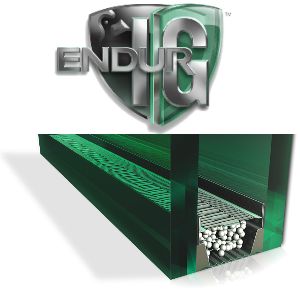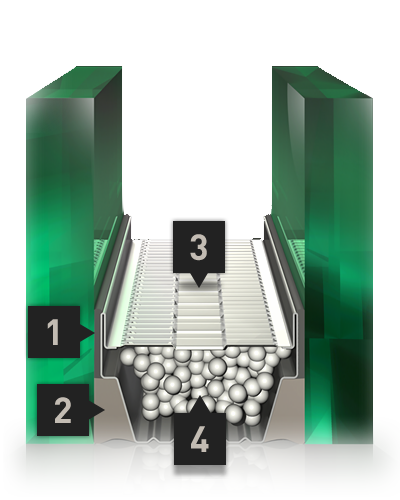Reduce Your Energy Costs with Energy Efficient Windows
Understanding a Window’s Performance
Understanding all of the factors in a window’s energy efficiency can be difficult.
What do terms like Energy Star,
Here’s a brief overview of the important factors in energy efficiency.
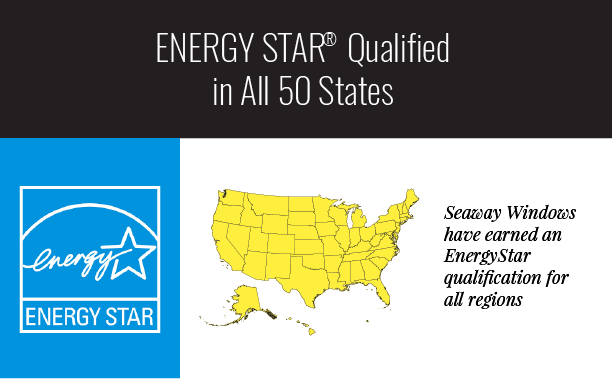
Thermal Performance of the Entire Window
ENERGY STAR® & NFRC…TRUST THE EXPERTS
ENERGY STAR was created by the United States Department of Energy to establish a program for evaluating the thermal performance of windows and their suitability for different geographic regions of the country.
Windows must be tested to the National Fenestration Rating Council (NFRC) standards. Windows must be certified by an independent third-party testing lab as meeting the NFRC test standards and unbiased criteria set by ENERGY STAR.
Seaway offers a variety of glass configurations, including those that meet the criteria for each ENERGY STAR region.
All Seaway windows with low-E glass meet & surpass these criteria and are available to meet ENERGY STAR criteria in any of the climate zones.
1. U FACTOR: THERMAL INSULATION
The U-Factor indicates how easily heat will flow through the window, whereas R Factor indicates the opposite: how well the window will resist heat flow. The lower the U-Factor, the better a window insulates.
2. SOLAR HEAT GAIN COEFFICIENT
Solar Heat Gain Coefficient (SHGC) is the amount of solar radiation admitted through a window. The lower a window’s SHGC, the less solar heat is transmitted into the house and the easier it is to keep your house cool in the summer. On the other hand, in northern climates, a higher SHGC can provide beneficial passive solar heating in the winter. Seaway offers a variety of high-performance glass coating packages with varying SHGC ratings to suit your needs, based on your climate.
3. VISIBLE TRANSMITTANCE
Seaway’s spectrally selective glass coating packages have been designed to enhance a window’s thermal performance by blocking ultraviolet and infrared light, and in turn, block some visible light as well. Clear glass blocks about 20% of visible light.
4. AIR INFILTRATION
The amount of air that can pass through the seals of a window’s operating sashes, measured by a fraction of cubic feet per minute per square foot of window at 25 mph winds.
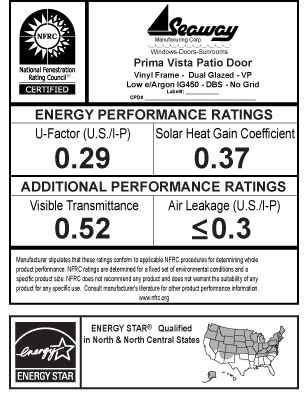
Not All Low-E is Created Equal
Seaway’s high-performance Low-E is our standard Low-E, and has a double thickness of silver and a hard outer layer of titanium to provide extraordinary performance in climates where reducing both heating and cooling costs are important.
Seaway’s high-performance Low-E has a clear appearance with minimal tint, yet it can keep the summer heat and the winter cold outside, giving you year-round comfort.
Endur Insulated GlassTM
Signature Gold windows utilize Endur Insulated Glass™ combined with MicroShield antimicrobial treated weatherstripping to maintain a weather-tight fit, keep mold and mildew at bay and help to maintain an allergy-free environment. Endur IG Spacer™ insulates the glass with a warm edge around the perimeter, where the glass is normally coldest and prone to condensation. Endur IG Spacer™ is built on the proven technologies that help achieve the industry’s lowest failure rate!
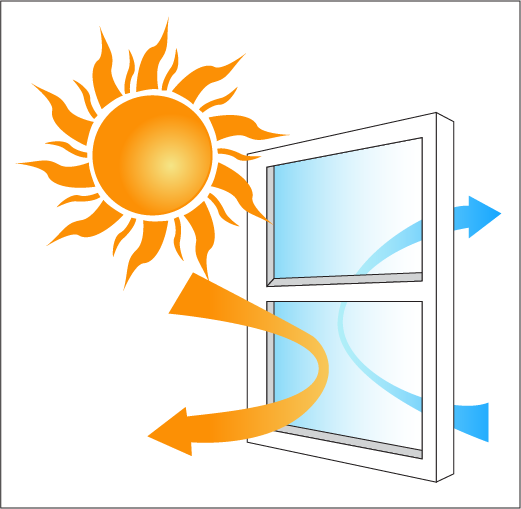
Inside an IG Unit
1 - Primary Seal:
Polyisobutylene (PIB) minimizes moisture permeation, is UV resistant and provides an outstanding argon barrier.
2 - Secondary Seal:
Specially formulated silicone for IG units provides long-term adhesion, is unaffected by UV exposure and provides excellent durability when exposed to moisture. Silicone also provides structural integrity.
3 - Spacer:
Stainless steel spacer features a roll form design to provide maximum area for primary and secondary sealant coverage. It provides increased resistance to condensation and less stress on IG seal system. No polymer content eliminates the risk of chemical fogging.
4 - Desiccants:
Beaded molecular sieve provides initial frost points below -65°F. Desiccant assures optimum moisture absorption while minimizing the effects of temperature-related pressure changes.

